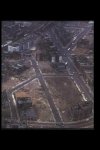Here's a story actually from member "fdce54" who worked at one of the A & P stores in the South Bronx, which is now a church. It was right across the street from aschool. He said every day, during the school year, the corner fire box was pulled. It was pulled at 7 am, 12 noon during lunch break, and 3 pm. Sometimes Ladder 17-1 (first section would respond). Other times Ladder 17-2 would respond. One was an aerial ladder and one was a tower ladder. So one day, young "fdce" asked one of the guys, "How do you know which ladder truck to take" ? He assumed those guys were assigned to Ladder 17 and would decide which rig to take.
When he asked one of the members that question, the member pointed out the big number 17 on the truck. And next to that big number 17 was a smaller sized number "2". He then told young "fdce54", "see that small number 2, that means it is Ladder 17, section 2". "We have two fully manned ladder trucks in that firehouse". That's because it's so busy.
Then young "fdce54" also noticed a small number 1 on Engine 41, and he noticed a small number 2 on another Engine 41. He learned that also in that neighborhood was Engine 41-1, and Engine 41-2. Two totally seperate Engine companies in the same firehouse, because there were so many fires.
Young "fdce54" grew up, lived, and worked in some of the toughest neighborhoods of Da Bronx. It's a miracle he survived. Today "fdce54" works as a Con Ed supervisor in some tough areas of Mt Vernon, Yonkers etc. He hopes to retire within two years. If you want to hear a few of his stories, he's got some to tell. There's a place right around the corner from Eng 81/Lad 46 that he sure likes. You can buy him a burger and a drink, and just let him talk. I think you'll be impressed with what he has to say.
When he asked one of the members that question, the member pointed out the big number 17 on the truck. And next to that big number 17 was a smaller sized number "2". He then told young "fdce54", "see that small number 2, that means it is Ladder 17, section 2". "We have two fully manned ladder trucks in that firehouse". That's because it's so busy.
Then young "fdce54" also noticed a small number 1 on Engine 41, and he noticed a small number 2 on another Engine 41. He learned that also in that neighborhood was Engine 41-1, and Engine 41-2. Two totally seperate Engine companies in the same firehouse, because there were so many fires.
Young "fdce54" grew up, lived, and worked in some of the toughest neighborhoods of Da Bronx. It's a miracle he survived. Today "fdce54" works as a Con Ed supervisor in some tough areas of Mt Vernon, Yonkers etc. He hopes to retire within two years. If you want to hear a few of his stories, he's got some to tell. There's a place right around the corner from Eng 81/Lad 46 that he sure likes. You can buy him a burger and a drink, and just let him talk. I think you'll be impressed with what he has to say.

